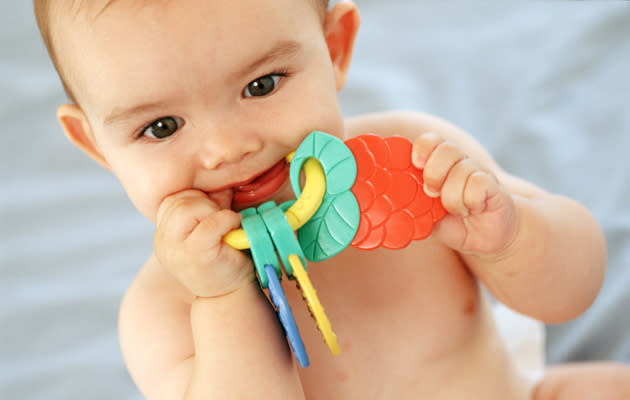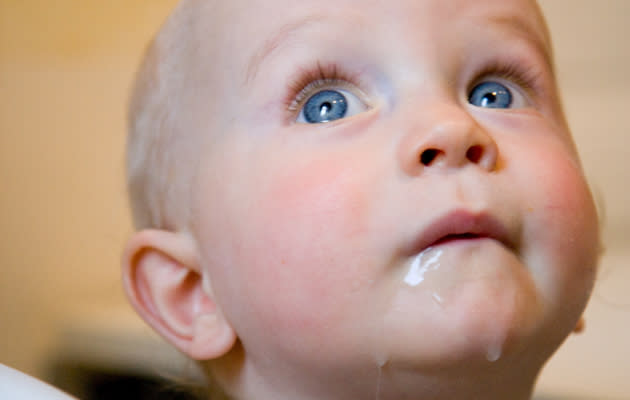 Yahoo Lifestyle
Yahoo LifestyleSigns your baby is teething
How you know your baby is teething.
A teething baby is one of the more difficult and tiring experiences of being a new parent but sometimes the arrival of new teeth aren’t obvious and there are more subtle signs to look out for
Obvious signs of teething include rather a lot of crying as baby teeth push up through little gums, and the need to bite and chew on anything to hand.

But there are more subtle signs that your baby is beginning to teeth before you get thrown in at the deep end. Here’s what to look out for to help you prepare.
Babies can get their first teeth anywhere between three months and a year so it’s difficult to predict exactly when they’ll arrive, bringing with them grumpiness you hadn’t expected in a child so small.
The first signs can appear one or two months earlier than any actual evidence of a tooth.
Crying
If you thought newborn crying and colic would pass, wait until you go through teething. It can be hard at the best of times to work out what your little one is so upset about and before teeth start appearing, crying for no reason can be extremely distressing for both you and your baby.
This does depend very much on your baby. Some don’t seem to notice the teething phase, while others let you know about every tooth movement they experience for months. Use teething gels and toys even before teeth appear as this may help soothe, and speak to your doctor about pain medication that is suitable for your baby if she’s struggling.
Dribbling
Noticing extra saliva on bibs or your baby’s tshirt or babygrow is common. Keep an eye on her chin to wipe off the excess as this can cause mild eczema and chapping around the mouth. You may need to change her clothes more often and keeping bibs on outside mealtimes is a good idea.

Refusing to Eat
At the same time as dribbling more, your baby may also refuse to nurse or eat, depending on what stage she’s at. This can be because the sucking or chewing movement hurts her gums and puts her off despite hunger pangs. Usually hunger wins out though so do see your GP if she refuses to eat for more than a day.
Chewing and gnawing
You might not be able to see any evidence of milk teeth but even before they appear, your baby may find it comforting to put pressure on her gums by putting anything and everything into her mouth. You can help this by using cold chew-toys specifically for teething and if she’s on solid food, a banana kept in the freezer can be ideal to help numb the soreness.
Try rubbing a clean finger along your baby’s gums as the pressure can take away some of the throbbing pain.
Wind and upset stomach
It seems strange that something like teething can affect the digestive system but many parents report diarrhoea and even vomiting.
Though not all doctors agree, there is a medical theory for it. There is acid in your baby’s saliva that in larger quantitates than normal can upset the delicate balance of your baby’s gut. Because teething increases the amount of dribbling and saliva produced, you baby often swallows too much of this, leading to digestive discomfort.
Wind is another common side effect of teething as the enzymes and acid that cause the stomach upset can also create trapped wind.
Parents also report fever as a teething symptom and even a rash, which can be alarming as these are symptoms of more serious conditions such as meningitis.
If you’re not sure whether your baby is teething it’s important to check that any symptoms aren’t caused by something else. If you’re at all concerned, pay a visit to your GP.

